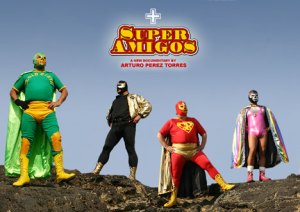Today kicks off our three-week Divided Cinema program, which runs until December 16 and includes six films and two symposia to provide more information and context about this period of German film history.
Tonight we are showing Wings of Desire, as previewed by Scott Rice, and Berlin-Schoenhauser Corner, which we’ve described as “the GDR’s answer to Rebel Without a Cause” (though it does not star Horst Buchholz).
Here’s more about the series:
Twenty years have passed since the fall of the mighty Berlin Wall, a landmark that stood since 1961 dividing West Berlin from the eastern part of the city and country. The Wall was also as a symbol for the divergent soviet and democratic ideologies around the world. Arguably the most moving historic moment of the 20th century was the Wall’s ultimate fall in November of 1989 after a period of dramatic social unrest. Northwest Film Forum marks the anniversary of that historic moment with Divided Cinema, a look back at how the politics of the Wall shaped Germany’s cinematic heritage.
Though from very different political and geographic perspectives, the films in Divided Cinema share a deep concern with separation. Some, like Jürgen Vogel’s And For Your Love Too, embrace it; others, like Wim Wenders’ classic Wings Of Desire, cast a melancholy air of mourning over their divided home. Berlin-Schoenhauser Corner follows East German youth who push the boundaries of separation, while Yesterday Girl examines the aftermath of crossing those boundaries. Pulling together these experiences with division, two documentaries chronicle the wall itself. Look At This City is a DEFA documentary by Karl Gass that recounts the history of West and East Berlin from the end of World War II to the building of the Wall on August 13, 1961. The wordless documentary The Wall recounts the construction, separation and destruction, before a backdrop of history both banal and iconic.
“Many people, though knowledgeable about the history of the Berlin Wall, have not had the opportunity to compare the expression of that division through the cinema,” says Film Forum Program Director Adam Sekuler. “With Divided Cinema we hope to examine the tensions present within German culture in the late 1950s through 1980s by viewing them as presented in the art of cinema.”
Sekuler programmed Divided Cinema to juxtapose films representing different viewpoints of Germany.
In addition to the six films in the series, Northwest Film Forum welcomes Seattle University’s Cordula Brown and the University of Washington’s Eric Ames, who will lead symposia on films from the program.




 I was having trouble accessing the Seattle Public Library database this week, so I wasn’t able to find the original clipping of this Vincent Canby review, but you can read it online here:
I was having trouble accessing the Seattle Public Library database this week, so I wasn’t able to find the original clipping of this Vincent Canby review, but you can read it online here:


You must be logged in to post a comment.